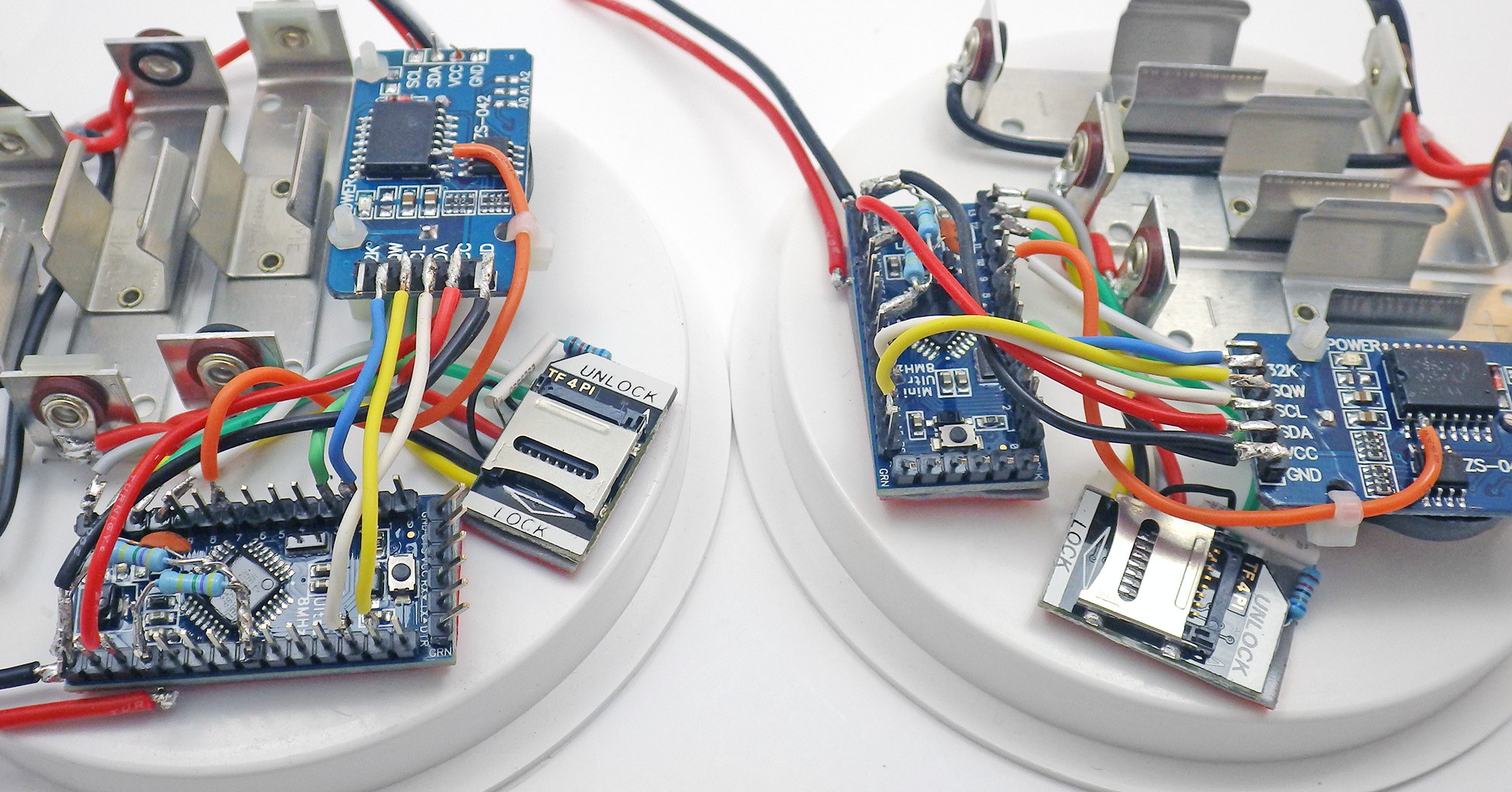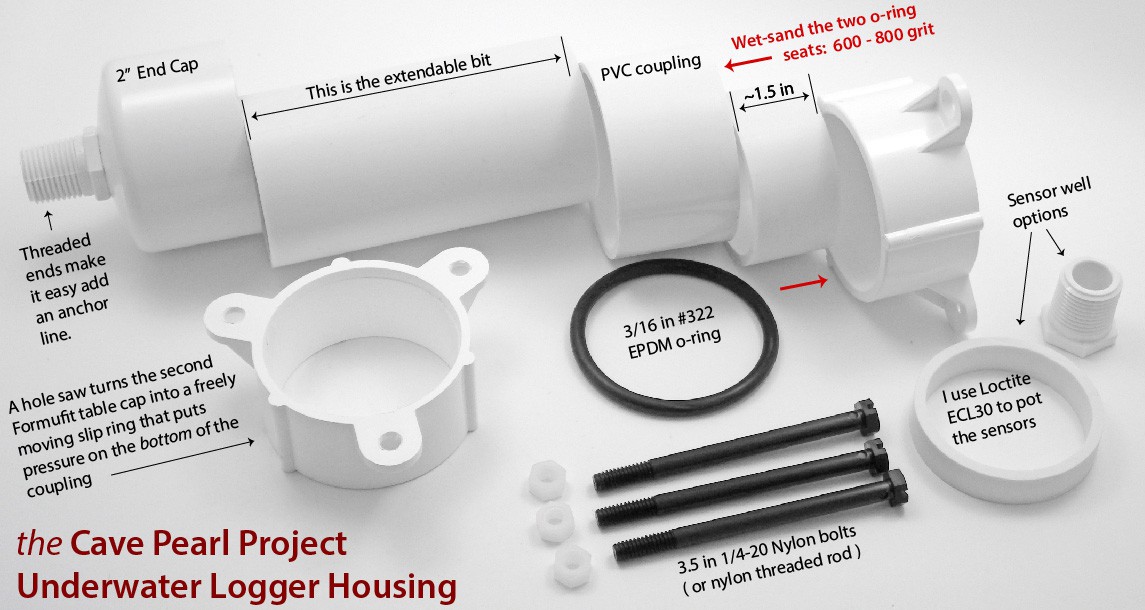-
1Step 1
There have been many improvements to the way we build our basic 3-module logger over the years, and you can find a summary of those different build tutorials at:
https://thecavepearlproject.org/how-to-build-an-arduino-data-logger/
If you go with the cheapest parts, the basic platform can be built for less than $10. But noname clone boards usually have poor voltage regulators, and tend to draw higher sleep currents: shortening your operating lifespan to between 4-6 months. Boards with better regulators (like the MCP1700 series) can almost double that. The same thing applies to sensors where better quality Adafruit / Sparkfun breakout boards often draw considerably lower sleep currents than the eBay stuff. But the basic logger works fine across the range so you can build one with whatever you can buy locally. If you standardize your I2C or 1wire bus connectors, (I use 4 pin Deans Micro Plugs) it's easy to change the 'sensor caps' later and re-purpose the logger portion.
Here's a closeup shot of the three basic components laid out in a flat platform configuration (in this case built with 8mHz Rocketscream Ultras):
![]()
(Note: the orange wire in this image is for powering the RTC directly from an Arduino pin 7. This is NOT in the wiring diagram above as I am still conducting experiments to see if this trick to lower the sleep current is robust enough to be adopted on all of my loggers. If you want to give it a try you can read more about it on my RTC page.
The history of my underwater housings:
http://edwardmallon.wordpress.com/category/a-diy-underwater-housing/
It's been a long road, but the new smaller housings can be built with a few straight cuts, a hole saw & some pvc cement. The design can be extended to any length, making room for more electronics and as many batteries as you need for a long deployment. Presented here is an exploded view, and only the two surfaces indicated need to be sanded smooth enough to mate with the o-ring. 2" Formufit table leg caps provide the struts for the bolts and you can find more supplier links in the New Housing for 2015 post. Total cost runs about $10-12.
![]()
While it's probably not obvious to someone who isn't a diver, having a freely sliding top cap means that the o-ring will be more compressed at depth, improving the water tight seal. I haven't had enough spare units yet to do destructive testing, but I am confident these housings will survive long duration deployments at significant depth. This design has already survived a five months at 10m, and several units are now on long term deployments ranging from 5 to 25m depth.
The Cave Pearl Project
Creating a generic data logging platform that is easy to build & modify for many different environmental monitoring projects.
 Ed Mallon
Ed Mallon

Discussions
Become a Hackaday.io Member
Create an account to leave a comment. Already have an account? Log In.